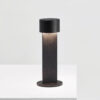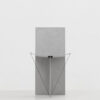Fred Sandback (1943 – 2003) was an American artist who used his extraordinary and minimalist sculptures as an intuitive expression to shape the experiences of his viewers. I had the pleasure of visiting the first solo museum presentation in Berlin at Hamburger Bahnhof – National Gallery of Contemporary Art to get an impression of Sandback’s special spatial installations. Curated by the director duo Sam Bardaouil and Till Fellrath, an inspiring and fascinating exhibition awaits me.
It’s Wednesday morning, 11 o’clock. The sun is shining, after what seems like an eternal winter in Berlin this year. We enter the Hamburger Bahnhof. The atmosphere is relaxed. We are welcomed by the two directors Sam Bardaouil and Till Fellrath and Lilian Tone, board member of the Fred Sandback Archive. The first work I see is Sandback’s sculpture titled “Broadway Boogie Woogie” – a sculptural study and homage to Piet Mondrian’s work of the same name from 1943. This and eight other sculptures covering a time window of more than three decades, as well as 64 variations of a three-part sculpture (Sandback conceived for Kunstraum München in 1975) are the focus of the exhibition.
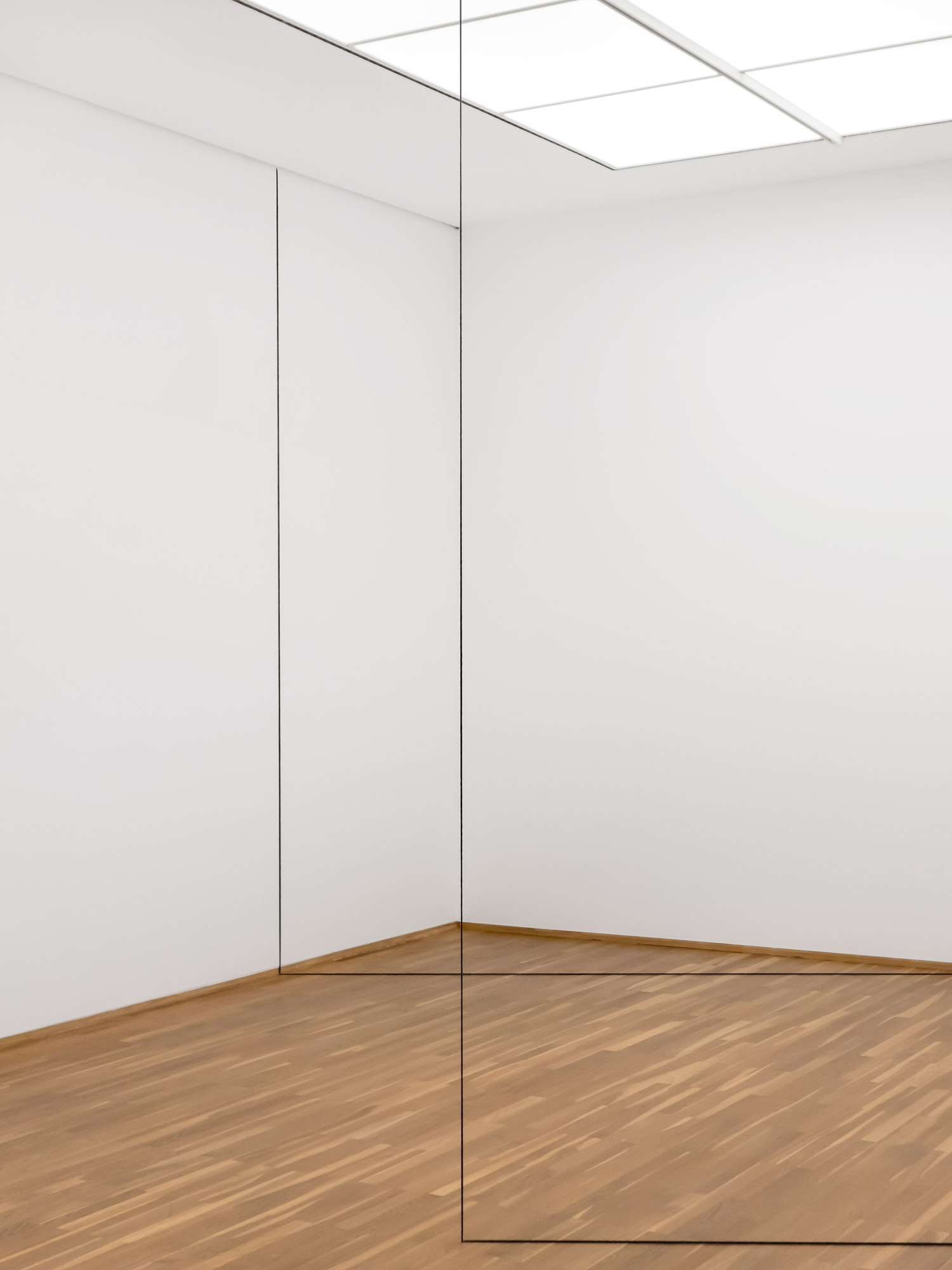
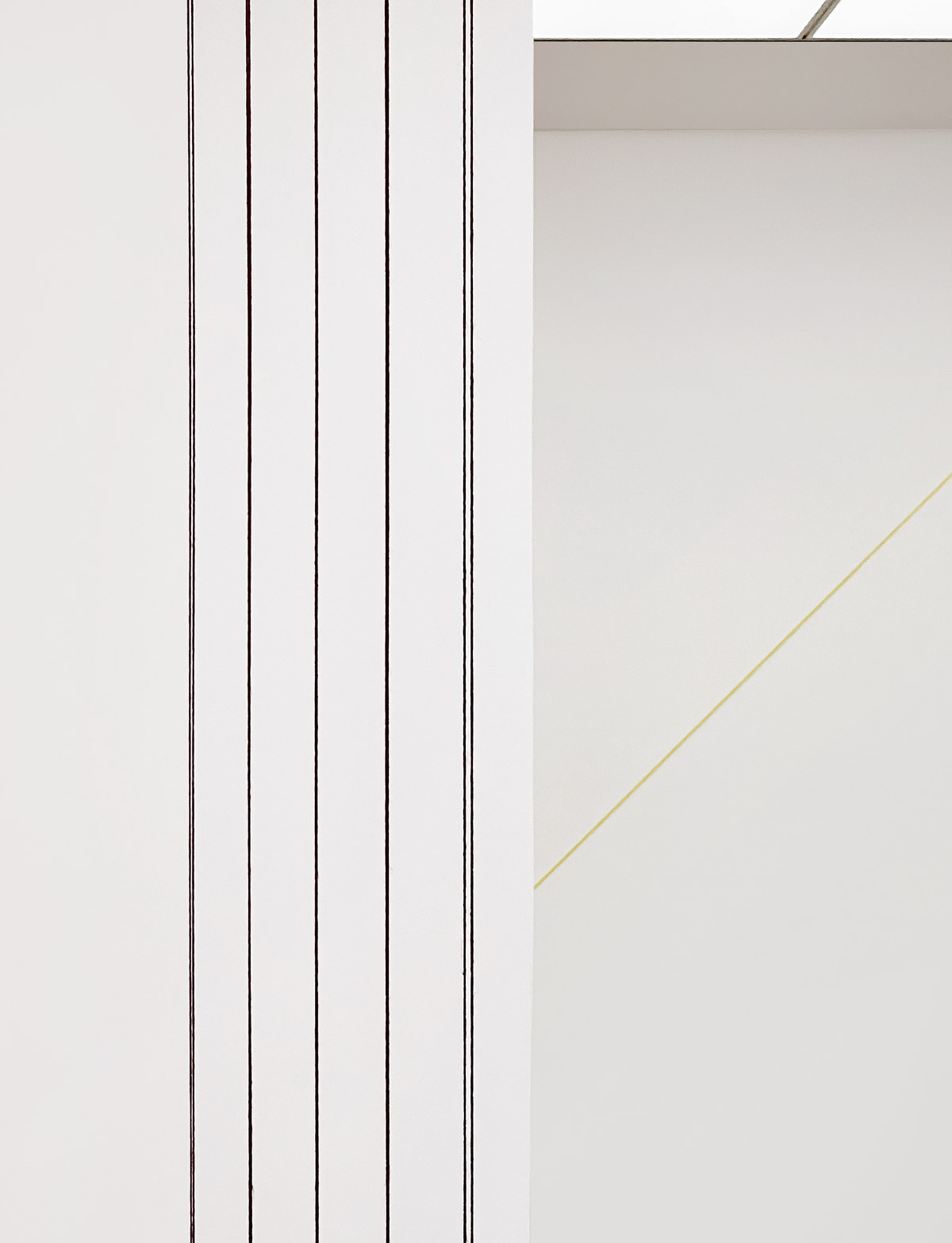
Fred Sandback, born in Bronxville New York in 1943, began his path to art at the renowned Yale School of Art and Architecture in New Haven, where he studied both philosophy and sculpture. During this time his teachers Donald Judd and Robert Morris were important companions and sources of inspiration for him. The US art world was hesitant to exhibit his work at this time; the Minimal Art movement was just starting to flourish at that time. In Germany, however, the young artist received support from museums and galleries in Munich, Essen, and Krefeld. It was not until the late 1960s that his works also received the attention they deserved in the United States.
I walk around his works, observing how the thin lines break through the space, and how they change the perception. Like a “new form of drawing in space” as Till Fellrath, director of the museum, so aptly puts it. Thin steel rods, elastic cords, and acrylic yarn form surfaces and volumes, distorting the boundaries of the artwork. They engage the empty spaces in between, their surroundings, and me as the viewer, making the work directly perceivable. They inspire to explore the space and to enter a dialogue with it.
The title of the exhibition ‘Simple Facts’ comes from a quote by the artist from a 1977 catalog: “I’m interested in working in that area in which the mind can no longer hold on to things. The point at which all ideas fall apart… My lines aren’t distillations or refinements of anything. They are simple facts, issues of my activity that don’t represent anything beyond themselves.”
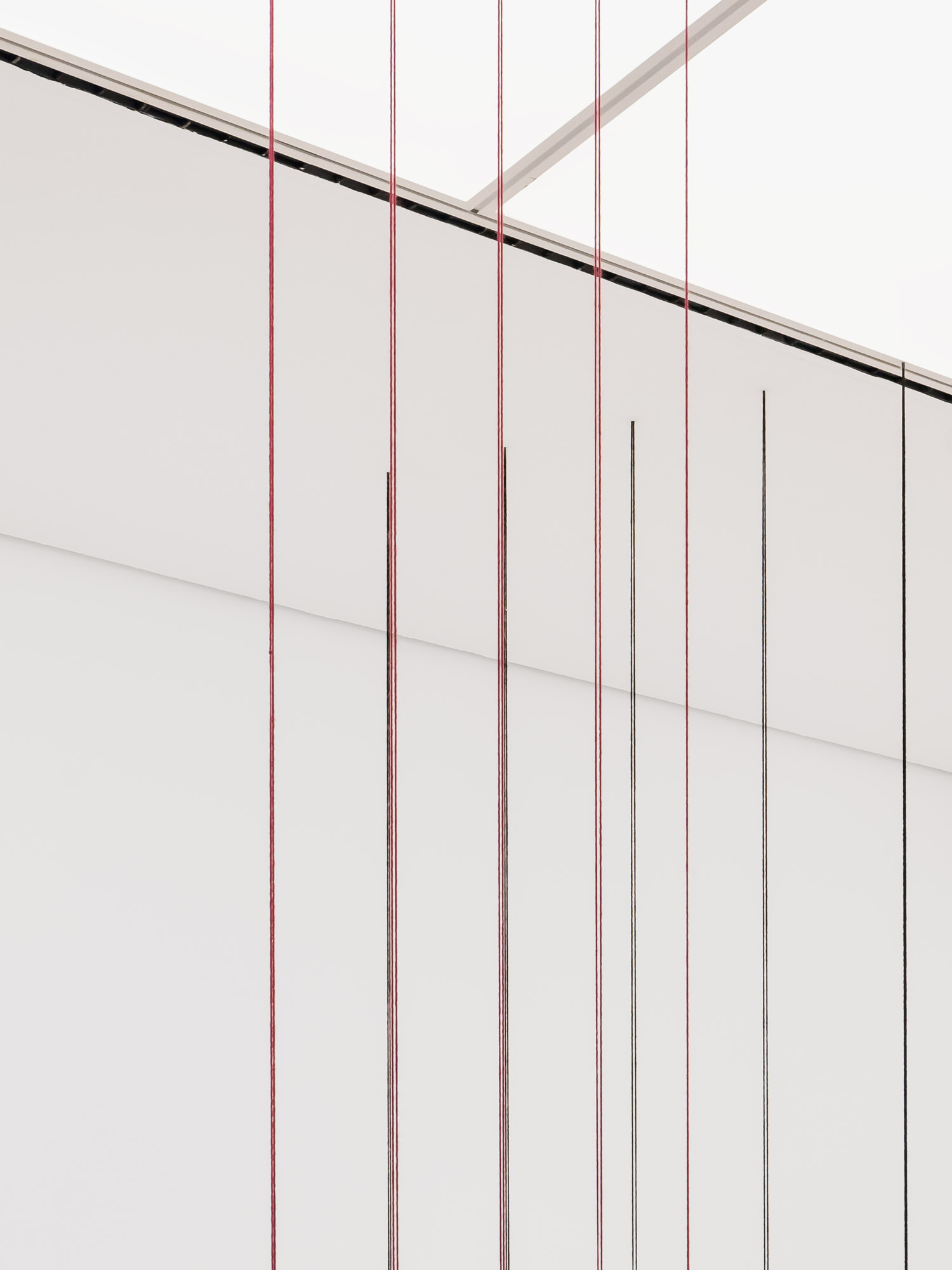
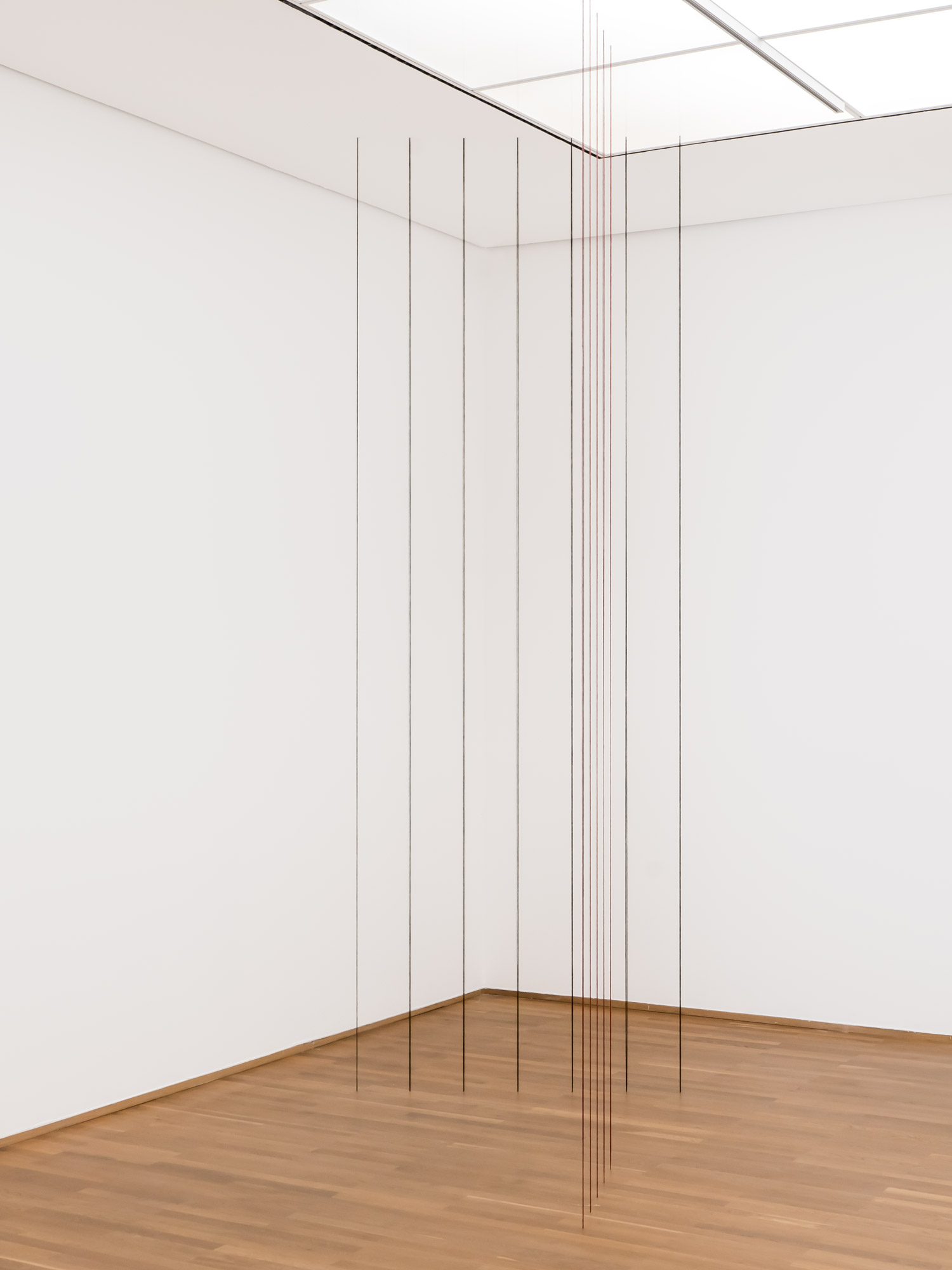
The centerpiece of the exhibition is the work “Untitled (Sixty-four Three-part Pieces)” from 1975, which illustrates his engagement with space. Each week, until the end of the exhibition, a different version of the sculpture will be shown. The accompanying drawings that Sandback made for the 64 possible combinations will be exchanged during the course of the exhibition to show the current version of “Untitled (Sixty-four Three-part Pieces).”
It’s inspiring to move around the works, to observe how the lines intersect, and form patterns and shapes. They change the space, or rather the perception of the space, they seem to separate and divide. They evoke lightness and have something delicate. Sandback believed that the sculpture was a connecting element between him, his environment, and others. For him, they were “inhabitable drawings”.2 His groundbreaking minimalist art leaves us with a viewing experience unlike any other.
The exhibition ‘Fred Sandback. Simple Facts’ at Hamburger Bahnhof in Berlin is on view until September 17, 2023. It is well worth a visit.
The line is a whole, an identity, for a particular place and time.
Fred Sandback
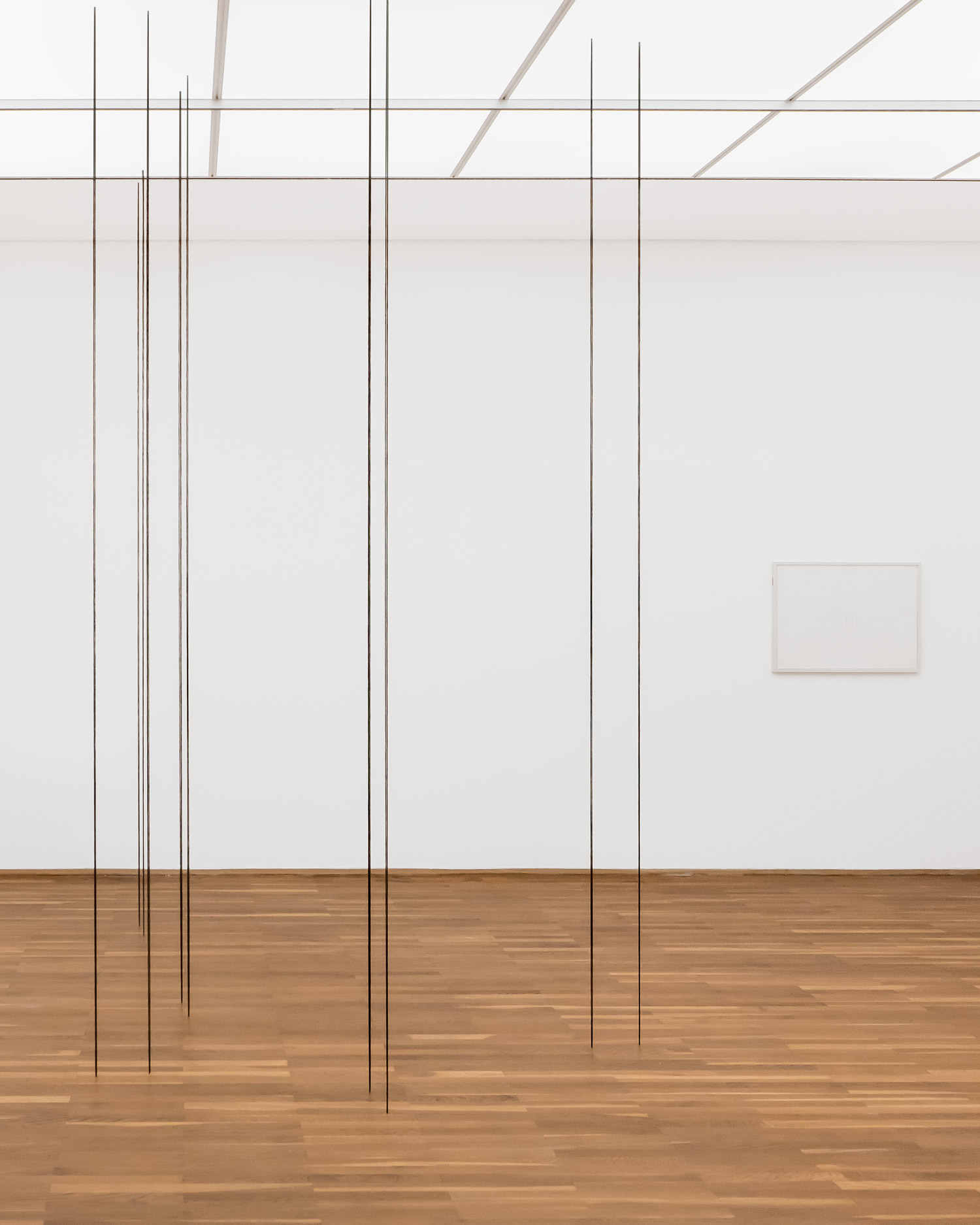
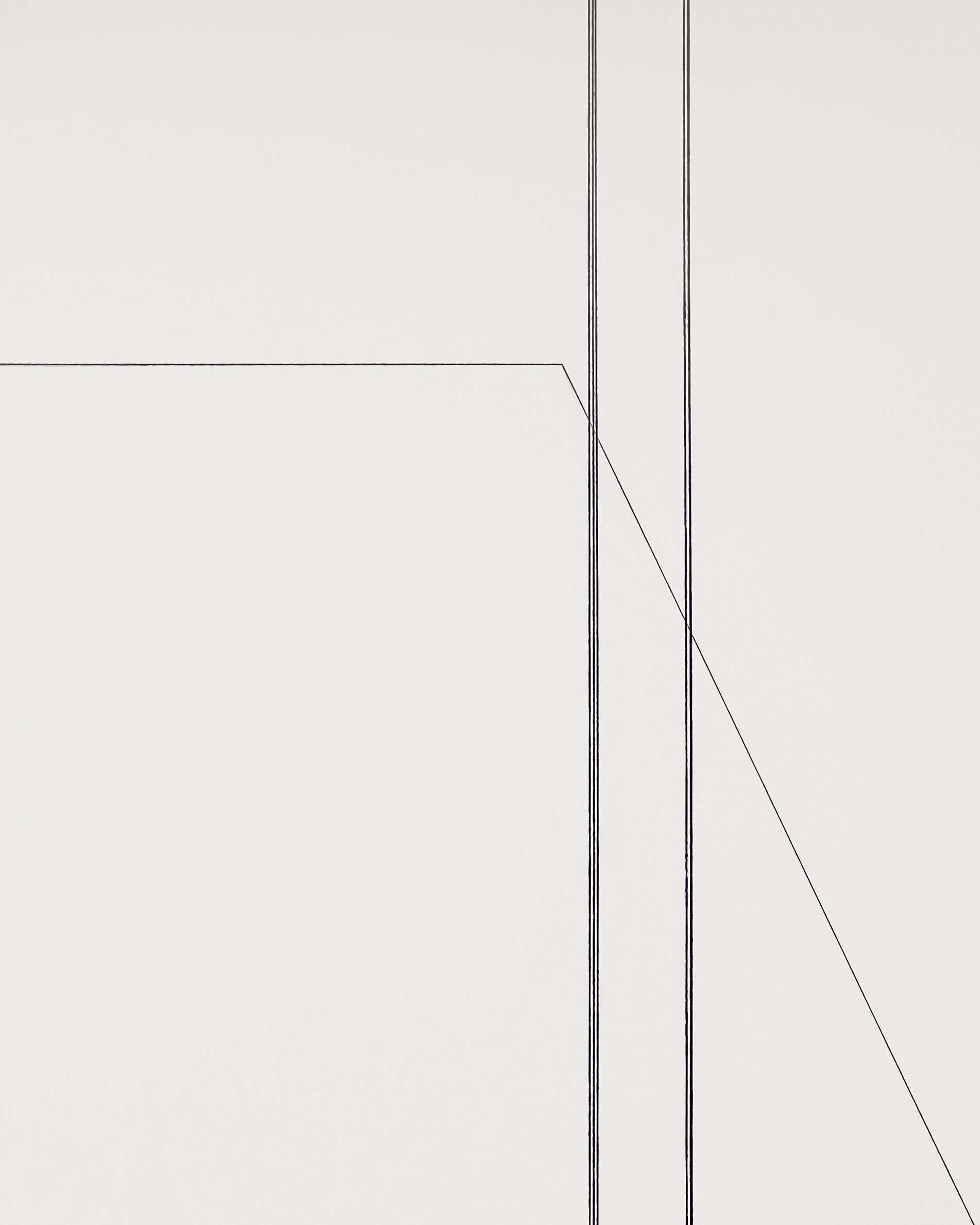
Further Reading / Resources
1 https://hyperallergic.com/324976/the-point-at-which-all-ideas-fall-apart-fred-sandbacks-grand-illusions/
2 https://www.fredsandbackarchive.org/texts-1999-statement
https://www.smb.museum/ausstellungen/detail/fred-sandback/
https://www.fredsandbackarchive.org/
